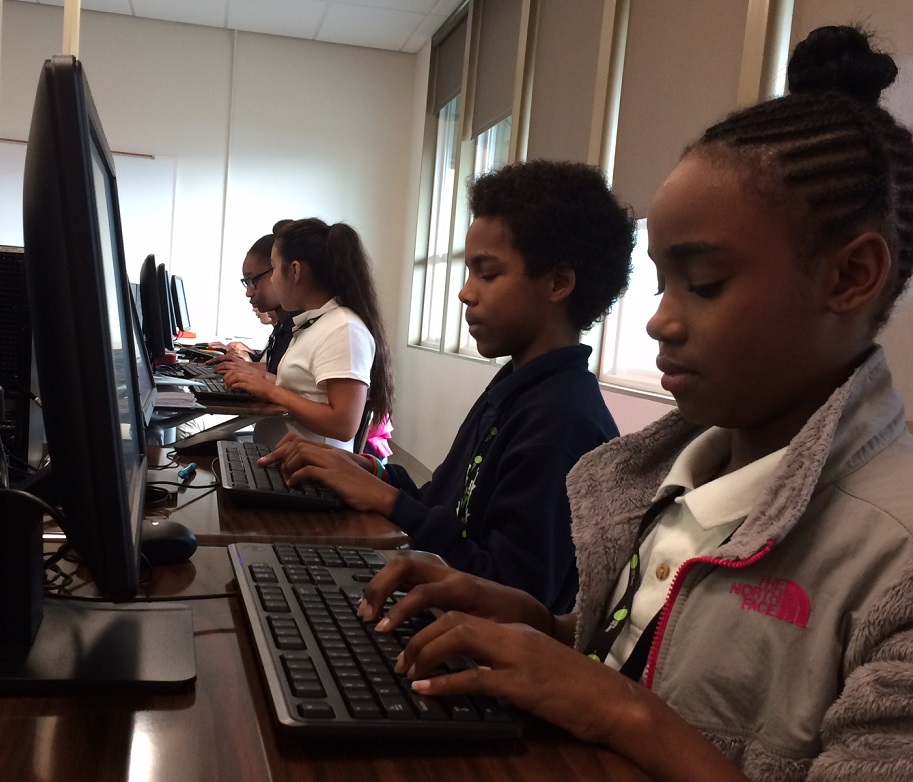A Vision for Education Technology


by Dr. Kevin Keelen
Chief Information Officer, Green Dot Public Schools National
Over the past decade, there has been a growing movement to incorporate emerging technologies into the classroom experience. From blended-learning models to educational software to virtual schooling, much has been written about the promise of technology to improve student outcomes. Yet, despite the energy around technology in education, little hard evidence has emerged to support such claims.
Green Dot prides itself on effectiveness and efficiency, thoroughly piloting and evaluating any adaptations to our teacher-centered learning model. This approach has been applied to the thoughtful expansion of technology in our schools and classrooms and in avoiding the all-too-common pitfalls of inadequate infrastructure, the careless introduction of untested technologies, insufficient training, and the rarely considered burden of ongoing tech support.
Infrastructure
The backbone of the successful use of technology in education is a strong infrastructure. As such, over the last 24 months, Green Dot has leveraged deep discounts available via the federal E-Rate program to invest in full-scale school technology modernizations. These modernizations include: 1-2 high-density wireless access points per classroom; all-new Voice over IP (VOIP) phones in each classroom and office; speakers & clocks integrated with the VOIP system in each classroom and throughout school hallways; and refreshed networking equipment and cabling to ensure that over 1,000 users per campus can use a variety of internet-based technologies seamlessly.
Student-Facing Technology
Accompanying these changes has been a purposeful transition in the number, type, and quality of staff- and student-facing devices deployed in Green Dot’s schools. Recognizing the many inefficiencies inherent in using low-quality technology, Green Dot has pivoted from many of its counterparts and invested in high-quality tech, including PCs with more expensive, but far superior, solid state drives, in addition to faster, cloud-based Chromebooks.
Green Dot’s Chromebook rollout has been an especially informative case study. Beginning with just 60 Chromebooks at one school, Green Dot expanded its pilot to 450 Chromebooks for the Spring 2014 Smarter Balanced Field Test – the first opportunity most California schools had to test their readiness for the state’s new, web-based student exams. Among the devices used in the field test, Chromebooks received the highest marks from teachers and school leaders, and at roughly a third of the price of a traditional PC, they offered an opportunity to put more high-quality devices in the hands of students. Just 15 months later, Green Dot has now deployed nearly 3,500 Chromebooks across its 23 schools, helping to grow from a student-to-device ratio of greater than 3:1 to less than 2:1.

Tech Support
To provide teachers and school leaders with the necessary support to successfully integrate technology into classroom learning and school operations, Green Dot radically changed its tech support service model to provide a more efficient, user-friendly experience. NerdFone – a consolidated technology helpdesk available via phone, chat, or email – was launched in August 2014. Open from 5am-5pm (Pacific) daily, NerdFone solved over 3,000 cases in its first year and earned a near-perfect 3.9/4.0 rating from educators throughout the organization. NerdFone’s philosophy is simple: to help solve issues at the exact moment educators need help. Technology should be an accelerator for learning, not an impediment.
Aiming to help innovate with these new technologies, Green Dot also established its first IT Project Management Office (PMO). Facilitated by a former Deloitte consultant, the IT PMO brings structure, process, and follow-through to promising ideas throughout the organization. To date, the PMO has guided over a dozen key projects to completion, with a number of highly impactful projects ongoing.

Outcomes & Next Steps
Green Dot’s efforts over the last 24 months have resulted in a seismic shift in perceptions of the technology function and use of education technology in the organization. In a June 2015 survey, Green Dot school leaders rated ten key components of Green Dot’s technology model, resulting in an average satisfaction score of 4.8/5.0. Having established this baseline of high-quality infrastructure, devices, and service, Green Dot now turns its attention to its next series of strategic priorities for technology, including:
- Transitioning from legacy platforms to a single content management system serving all stakeholders, including Green Dot employees, students, & families. Inherent in this transition is a strong emphasis on mobile accessibility, specifically for students & families.
- Providing students & families with robust student data through these mobile platforms. Green Dot aims to move beyond traditional communication of grades & assignments to include state testing data, discipline data, and other measures of accountability.
- Expanding NerdFone to include opportunities for student leaders to provide service on all Green Dot campuses. Tentatively titled NerdFone Student, this leadership program will provide schools with 2-3 tech-savvy students per campus to equally participate in technology maintenance and assist students & families with navigating these new technologies. Students equally benefit by gaining real-world experience working in the technology field and gaining access to mentorship opportunities with Green Dot’s own technology team, including NerdFone’s professional staff.
Green Dot’s investments in a robust technology infrastructure, high-quality devices, a world-class service model, and mechanisms for innovation and project management have created a strong foundation for the successful expansion of education technology in schools and classrooms. In turn, schools are able to make informed choices about technology and how best to use it to build on excellent teaching and advance student learning. It’s a thoughtful, cost-effective approach that illustrates the organization’s commitment to support its many stakeholders and keep dollars in the classroom where they belong.

